The Fleet Air Arm is the flying section of the Royal Navy, and the collection concentrates on naval aircraft. Continue reading “Fleet Air Arm Museum, Somerset”
Canons Ashby, Northants.
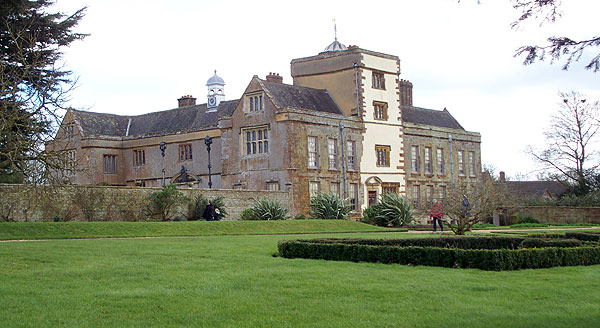 National Trust.
National Trust.
The house originated as a Tudor manor house and has been altered and extended over the centuries. It is built round a courtyard, whose rough and irregular walls are set with leaded windows, while a squat tower rises over the south front. The exterior of the house is mostly clad in handsome stone. A series of impoverished owners have made few changes since the 19th century.
The visitor enters across the courtyard and into the great hall. The drawing room upstairs is dominated by a massive Elizabethan fireplace, and has a domed plasterwork ceiling covered with carving and with a massive central pendant. Other notable rooms include the Painted Parlour, with trompe l’oeil decoration. The old kitchen and other service rooms can be viewed.
Now (2016) the Long Gallery is a through route, and two small rooms opening off it can be viewed. Descending to the Winter Parlour and kitchen, one can visit two servant’s rooms en route.
Outside, the west side faces a grassy court, and the south side faces a formal garden of 18th century design. The house is set in an expanse of parkland.
A few dozen yards from the house, on the opposite side of the road, is a church, now reduced to a quarter of its original size, all that remains of the priory. Materials were taken from the demolished east end of the church to to build the H-shaped Tudor house.
When the NT acquired the house they had to take urgent action to prevent parts of it from falling down. Some old wall paintings uncovered during the works can still be seen upstairs. Services consisted of one cold water tap in the kitchen.
This is a charming old house which I have visited more than once. The gardens are also very pleasant.
Additional photos May 2024
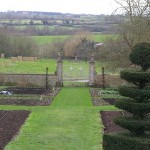
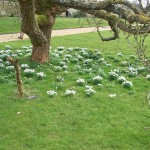
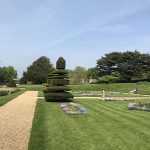
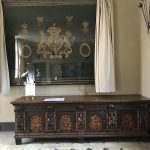
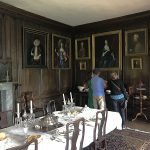
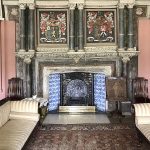
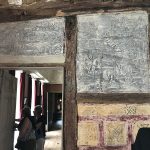
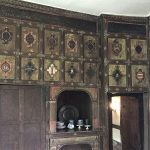
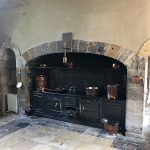

Whitby Abbey, Yorks
 English Heritage.
English Heritage.
The abbey stands on a headland overlooking the sea and the town of Whitby. The Gothic ruins are said to have inspired Bram Stoker when he was writing ‘Dracula’. The site dates from AD 657, and the visible ruins, in an Early English gothic style, date from the 13th century. Quite a lot of structure still stands, despite the ravages of time, North Sea weather, and a direct hit by a shell from a from a WWI German battle-cruiser. Also on the site are the remains of the Cholmley family mansion, now adapted to house the visitor centre and exhibitions. An audio tour is also available.
The Abbey can be reached from the town either by 199 steps, or by a much more circuitous motor route.
This is an iconic Gothic monument, and well worth a visit if you are visiting Whitby.
Stowe House, Bucks
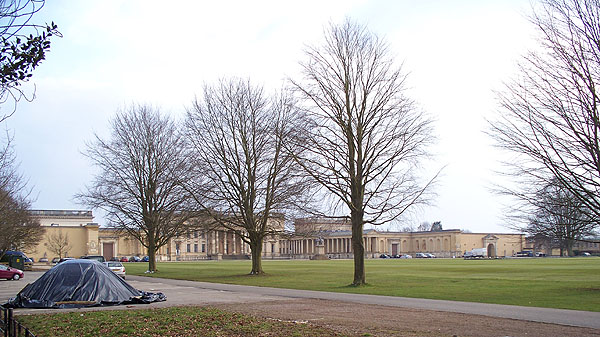
Stowe House nowadays houses a well-known public school, but on most weekdays the house is opened to the public. Visits are managed by the Stowe House Preservation Trust, which has a ‘Visitor Centre’ in the South basement front of the house, just to the left of the grand stairs. Access is by guided tour, with a self-guided option during school holidays. The immense house is built on a palatial scale, and has some magnificent interiors. It is regarded as one of Britain’s finest 18th-century houses. Restoration work continues, the total budget being £40 million (!)
If you are unable to visit on a weekday, you can see the exterior from the National Trust’s Stowe Landscape Gardens, which surround it.
I thought that the central hall with its elliptical ceiling is really impressive, and the other state rooms are worth seeing too.
Please note that Stowe School, the Stowe House Preservation Trust, and the National Trust (who manage the gardens) are all separate organisations. Access to the house for tourists is via the National Trust’s gardens and the National Trust’s New Inn reception complex.
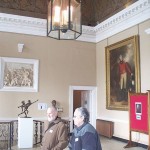
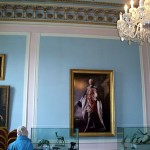
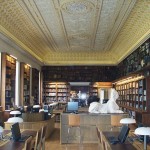
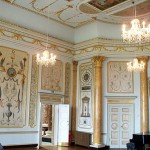
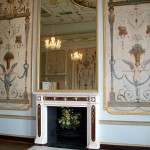
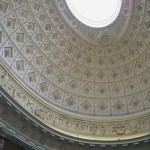
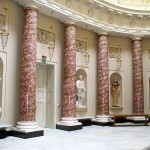
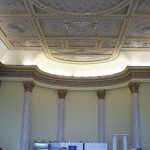
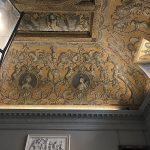
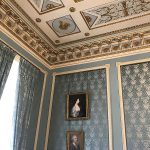
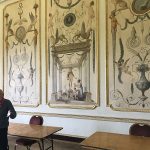
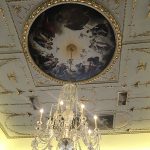
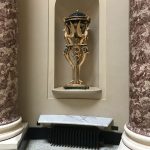
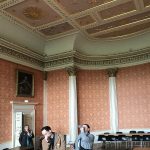
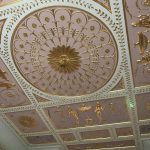

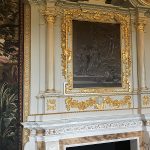
Rievaulx Terrace & Temples, Yorks
National Trust
The site is an artificial terrace of serpentine form, on a wooded escarpment overlooking the ruins of Rievaulx Abbey. Wide lawns are framed by banks of luxuriant flowers, and at either end of the terrace is a small temple. The Doric or Tuscan temple has flooring from the Abbey, and the Ionic temple at the other end was intended as a banqueting house and has elaborate interior décor. There is an exhibition in the Ionic Temple basement, in the former kitchen quarters. The terrace was constructed for Thomas Duncombe III, from the same family who owned Duncombe Park a mile away. Duncombe Park also has a formal terrace and temples, constructed earlier in about 1730.
The gardens are very pleasant, and worth a visit if you are touring in the area. Other attractions, e.g. Duncombe Park, Nunnington Hall, are nearby. In theory, the site overlooks the nearby Rievaulx Abbey below, but in practice the view (in 2005) is severly restricted by tree growth.
Rievaulx Abbey, Yorks.
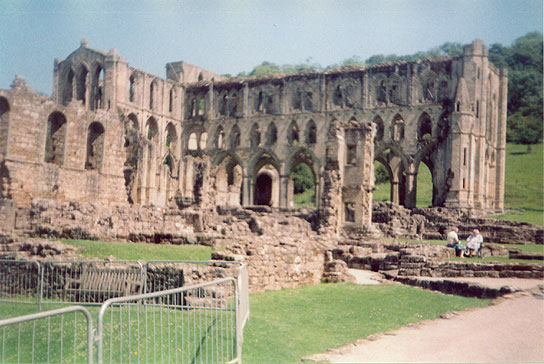
The abbey ruins lie in a quiet valley and large parts of the church survive to their original height. There are substantial ruins of other monastery buildings. The site has yielded much archaeological evidence about abbey life, and there is an indoor exhibition. There is an audio tour.
Well worth a visit if you are touring in the area.
In theory, the site is overlooked by the nearby Rievaulx Terrace above, but in practice the view (in 2005) is severly restricted by tree growth.
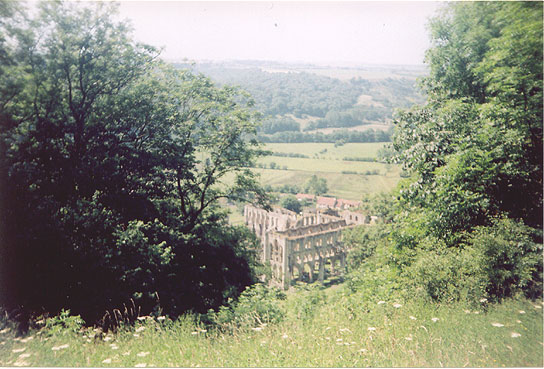
York Minster
Or, in plainer English, York Cathedral.
One of the great cathedrals of Europe; a fabulous medaeval Gothic building. Even if you are not particularly interested in architecture or religion, don’t miss this if you are in the area. You’ll be impressed by this soaring creation of intricately carved stone. It shows what our ancestors thought was worth spending effort and money on – while the peasants lived in fetid huts, God and his servants got to use a building like this. And yes it has its own website: York Minster.
Richmond Castle, Yorks.
English Heritage
Richmond Castle stands on a rocky promontory above the River Swale, and overlooking the picturesque old town of Richmond. The castle is Norman, and the towering keep is unusually complete. Visitors can climb up inside it for panoramic views over the castle’s great courtyard, the wide cobbled market place of Richmond, and the land beyond. There is an exhibition space, and a garden, its origins contemporary with the castle, on a terrace overlooking the River Swale. Inside the circuit of walls is a broad spread of green, with the vertical lines of the well-preserved keep soaring above.
The castle is well worth a visit if you are touring in the area. The castle is in the town and there is no dedicated parking. It was here that I encountered the parking-disk system used in North Yorkshire, that involves obtaining a free cardboard disk from a shop (etc), setting your time of arrival, and leaving it on view in your car.
The old town itself is also interesting, as I recall.
Pickering Castle, Yorks.
English Heritage
An interesting castle built on top of a mound surrouded by a deep ditch, obviously a replacement for a Norman wooden + earthwork fortification. Much remains of the outer circuit of walls surrounding the ditch, but not so much of the stone keep. There are views from the top of the mound.
Worth a visit if you are touring in the area.
Ormesby Hall, Yorks.
National Trust
The hall is built of weather-stained stone in a notably plain Palladian style. Originally it was in open countryside but now the suburbs of Middlesborough have encroached on the estate. The two-story service wing on the east was formed out of the earlier Jacobean house. Inside, the interior of the main block, which has some rich plaster decoration and woodwork carving, is a complete contrast to the plain exterior. The service wing contains a fully equipped Victorian laundry. Outside, there is an attractive garden. The fine Georgian stable block is home to the horses of the Cleveland mounted police. A Model Railway group is based at the Hall in the old wing, with three permanent layouts on view.
I found that visiting the Hall was worth a rather tedious drive to reach it.
